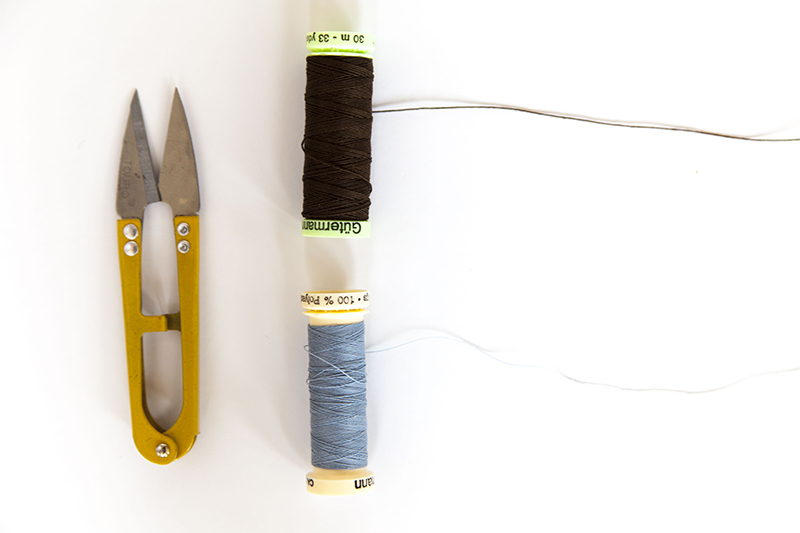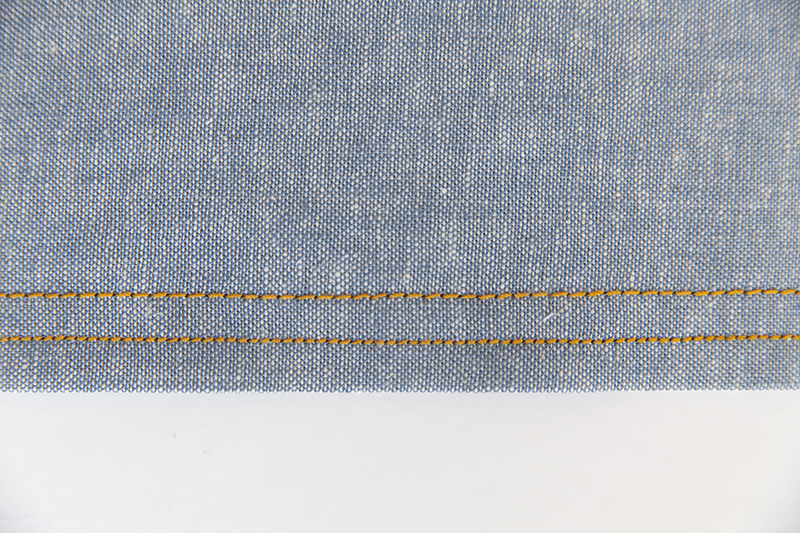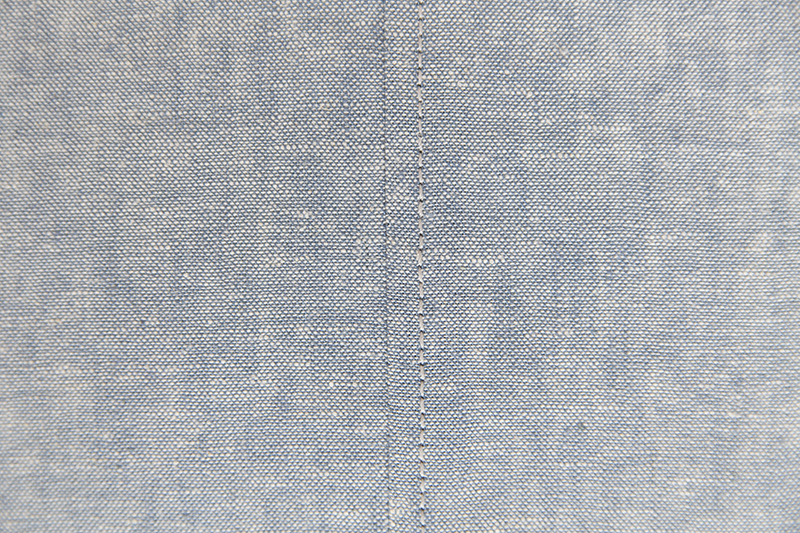Topstitching is my secret weapon. It can take a garment from plain to put together, and when executed correctly it can be a stunning detail. I find that so many people are intimidated by this simple technique, because of it’s stand out nature. Mastering topstitching is just a matter of practice and a few key tricks.
Ginger is such a great candidate for topstitching. It offers simple lines, a centre front seam, and no drastically curved edges. In celebration of Ginger month here are 8 tips for perfect topstitching.
1) Match the weight of your thread to the weight of your fabric. If you are sewing with a medium weight fabric, chances are an all-purpose thread will do the trick. Denims, canvases, and other heavier fabrics may require more substantial topstitching thread. When working with top stitching thread always use all purpose thread in your bobbin.
2) Working with topstitching thread may require you to change the tension setting on your machine. Low tension settings will result in loose stitching on the wrong side of your fabric. High tension will cause the bobbin thread to be visible from the right side of your fabric. Correct tension will create a well balanced stitch that is attractive from both the right and wrong side.
3) Use the appropriate needle. On medium-weight fabrics where all-purposed thread is being used, try a microtex needle. Microtex needles offer an extra sharp tip that create perfectly precise stitches. On heavy-weight fabrics where topstitching thread is being used choose a topstitching needle. This specialty needle has a longer eye to accommodate thicker thread.
4) Use a slightly longer stitch length. On medium weight fabrics use a stitch length of 3, but heavier fabrics 3.5-4 is more ideal. Using a longer stitch will help you project look neat and uncluttered.
5) There is no need to backstitch when topstitching, as it is a decorative stitch rather than a construction stitch. Backstitching can be visually distracting on your finished garment, and add unnecessary bulk. Instead to combat thread nests, hold onto your thread tails as begin to stitch.
6) Make a plan and stick to it. Draw or print a technical illustration of the garment you are sewing. Take note of where you would like to topstitch and at what width. Cross reference this sketch to your pattern instructions, taking note of when it is the ideal time to topstitch each portion.
7) The contrast of your thread should be directly proportional to your topstitching confidence. If this is your first project featuring topstitching avoid white stitching on black fabric, instead opt for a more subtle color until you have mastered this technique.
8) Practice, practice, practice, I can not stress this enough. Not only to test your stitch setting but also to improve your skill. Sewing is 25% muscle memory, it is hard to be good unless you train those muscles. So even if you are a topstitching pro, make sure to practice on a scrap of fabric to warm up before diving into the real deal.










Comments
Post a Comment